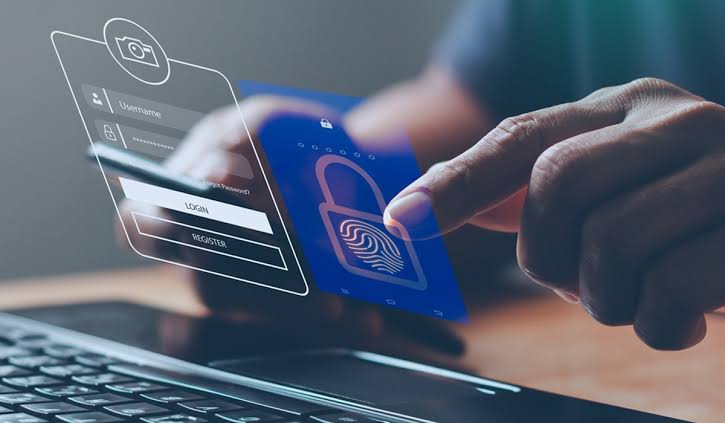As technology continues to advance at a rapid pace, the future of laptops is set to be significantly influenced by biometric security and fingerprint recognition. These technologies promise to enhance user security, streamline authentication processes, and provide a more personalized computing experience. This article explores the current state of biometric security, the role of fingerprint recognition in laptops, and how these technologies are shaping the future of personal computing.
The Rise of Biometric Security
Biometric security involves using unique biological traits to verify an individual's identity. Common biometric identifiers include fingerprints, facial features, iris patterns, and voice recognition. The adoption of biometric security has been driven by the need for more secure and convenient authentication methods, especially as cyber threats continue to evolve.
Advantages of Biometric Security
Biometric security offers several advantages over traditional authentication methods such as passwords and PINs. These benefits include:
- Enhanced Security: Biometric traits are unique to each individual, making it difficult for unauthorized users to gain access.
- Convenience: Users can authenticate quickly and easily without the need to remember complex passwords.
- Reduced Fraud: Biometric data is harder to replicate or steal compared to traditional credentials.
Applications in Various Sectors
Biometric security has found applications in numerous sectors, including banking, healthcare, and law enforcement. In the context of laptops, biometric security primarily revolves around fingerprint recognition and facial recognition technologies.
Fingerprint Recognition: A Key Player in Laptop Security
Fingerprint recognition is one of the most widely adopted forms of biometric security in laptops. This technology uses a scanner to capture and analyze the unique patterns of a user's fingerprint, allowing for secure and convenient authentication.
How Fingerprint Recognition Works
Fingerprint recognition systems typically consist of a fingerprint sensor, a processor, and software. Here's a step-by-step overview of how these systems work:
1. Enrollment: The user registers their fingerprint by placing it on the sensor. The sensor captures the fingerprint's unique patterns and stores them in a secure database.
2. Capture: When the user attempts to authenticate, they place their finger on the sensor, which captures a live fingerprint image.
3. Comparison: The captured fingerprint image is compared against the stored fingerprint data to verify the user's identity.
4. Authentication: If the fingerprints match, the user is granted access. If not, access is denied.
Advantages of Fingerprint Recognition in Laptops
Fingerprint recognition offers several advantages for laptop users, including:
- Speed and Convenience: Users can quickly unlock their laptops with a simple touch, eliminating the need for typing passwords.
- Enhanced Security: Fingerprints are unique to each individual, providing a higher level of security compared to traditional methods.
- User Experience: Fingerprint recognition can enhance the overall user experience by providing a seamless and efficient authentication process.
Integration with Other Security Features
Fingerprint recognition is often integrated with other security features to provide a comprehensive security solution. For example, many laptops combine fingerprint recognition with hardware-based encryption and secure boot processes to protect sensitive data and prevent unauthorized access.
The Future of Fingerprint Recognition in Laptops
As biometric technology continues to evolve, the future of fingerprint recognition in laptops looks promising. Several trends and advancements are shaping the future of this technology:
Improved Sensor Technology
Advancements in sensor technology are making fingerprint recognition systems more accurate, reliable, and secure. Next-generation sensors are capable of capturing high-resolution images of fingerprints, even in challenging conditions such as wet or dirty fingers.
Under-Display Fingerprint Sensors
One emerging trend is the integration of fingerprint sensors under the display. This technology allows users to authenticate by simply touching the laptop screen, eliminating the need for a separate fingerprint sensor. Under-display sensors offer a sleek and seamless design, enhancing the overall aesthetics of laptops.
Multimodal Biometrics
The future of biometric security in laptops is likely to involve multimodal biometrics, which combines multiple biometric modalities for enhanced security. For example, a laptop might use both fingerprint recognition and facial recognition to verify the user's identity. Multimodal biometrics can provide an additional layer of security, reducing the risk of spoofing and improving overall accuracy.
AI and Machine Learning
Artificial intelligence (AI) and machine learning are playing a significant role in advancing biometric security. These technologies enable fingerprint recognition systems to learn and adapt over time, improving their accuracy and resilience against various types of attacks. AI-powered algorithms can also detect and mitigate potential security threats in real-time.
Privacy and Security Concerns
While biometric security offers numerous benefits, it also raises important privacy and security concerns. The collection and storage of biometric data pose potential risks, including data breaches and unauthorized access. To address these concerns, it is crucial to implement robust security measures and adhere to strict data protection regulations.
Data Encryption and Storage
To protect biometric data, it is essential to use strong encryption methods for both data transmission and storage. Secure enclaves and hardware-based security modules can provide additional protection by isolating biometric data from other system components.
User Consent and Transparency
Ensuring user consent and transparency is critical when implementing biometric security. Users should be informed about how their biometric data will be collected, stored, and used. Providing clear and accessible privacy policies can help build trust and ensure compliance with data protection regulations.
The Role of Regulations
Regulations play a vital role in shaping the use of biometric security technologies. Governments and regulatory bodies are increasingly introducing laws and guidelines to govern the collection, storage, and use of biometric data. Compliance with these regulations is essential to protect user privacy and maintain trust in biometric security systems.
Conclusion
The future of laptops is set to be significantly influenced by the advancements in biometric security and fingerprint recognition. These technologies offer enhanced security, convenience, and a more personalized user experience. As sensor technology improves and AI continues to evolve, fingerprint recognition systems will become more accurate, reliable, and seamlessly integrated into laptop designs.
